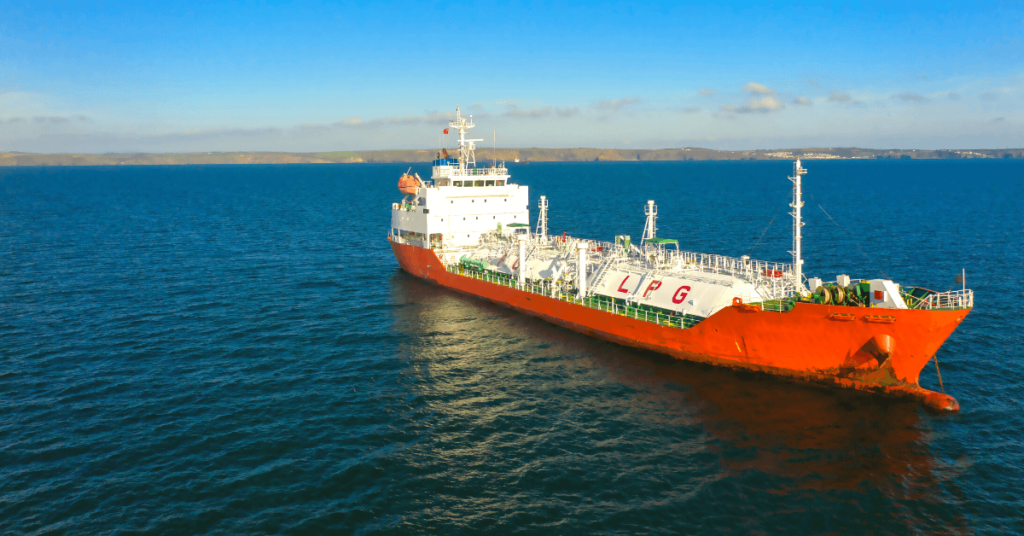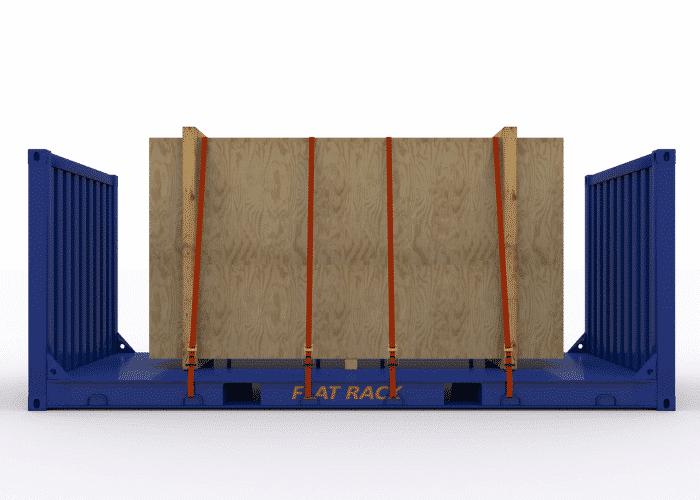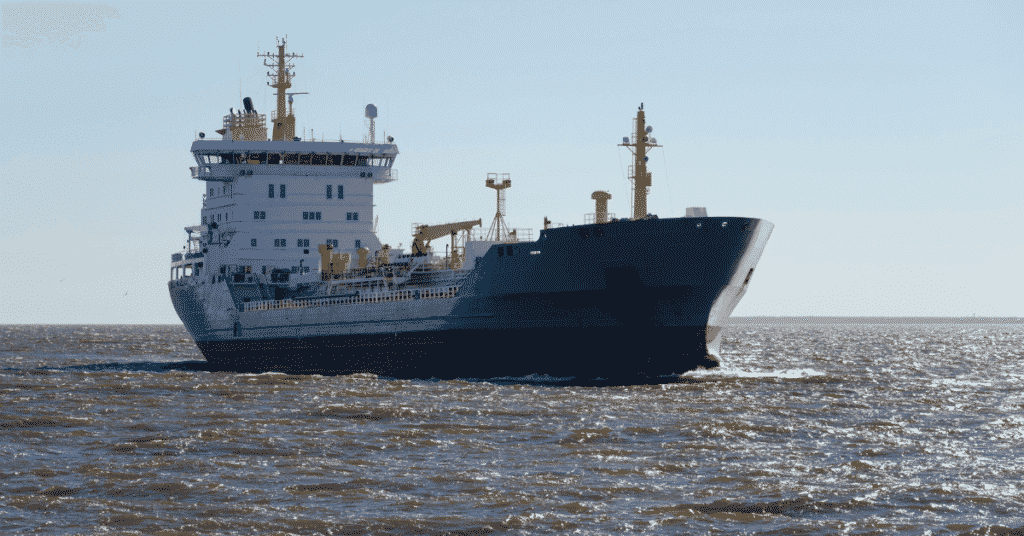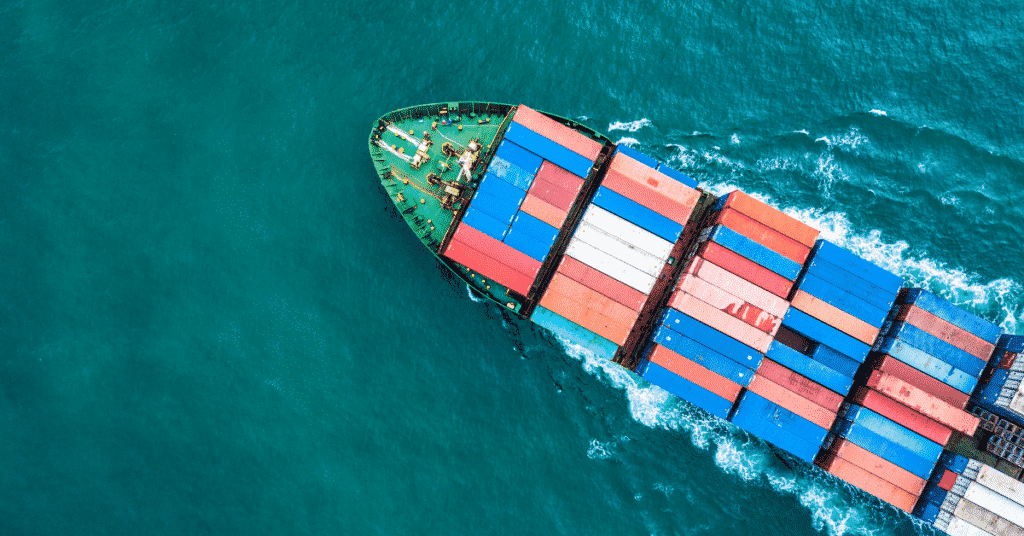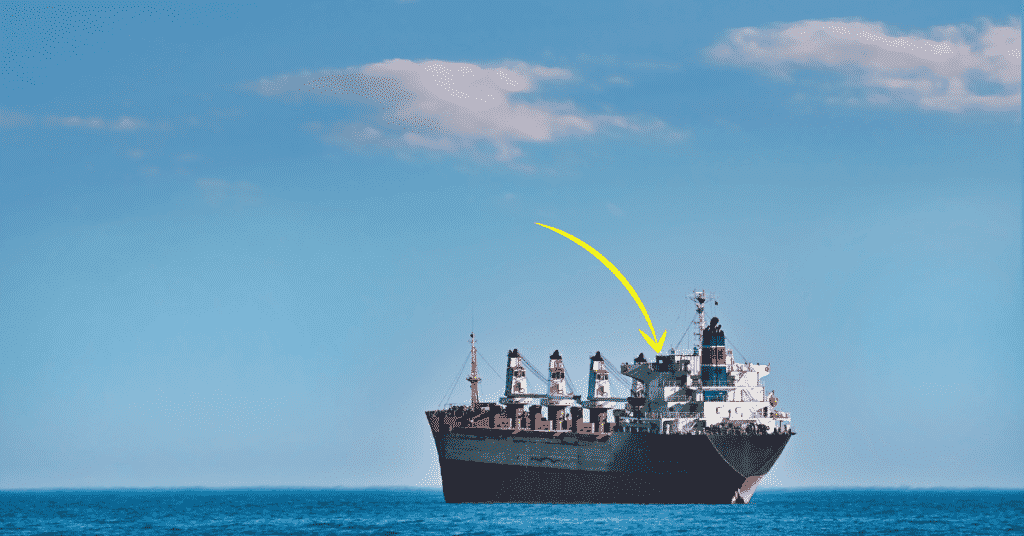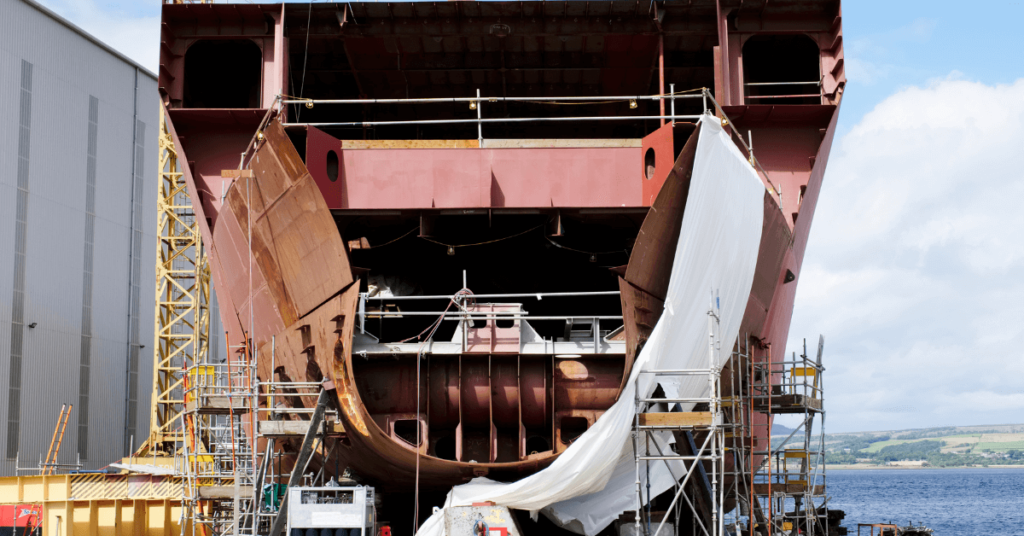How Ships Sail Against The Wind – Impacts Of Wind Action On A Vessel
When we think of the vessels in interminable seas, the foremost forces that come to our mind are the hydrodynamic and the hydrostatic ones, i.e., in simple terms the forces that arise from water.
While it is true that the major effects of fluids are the primary considerations of ship designers right from the inchoate stages of the design spiral, there is also another crucial component of forces arising from the winds.
Unlike the field of aerospace and aviation, the maritime domain does not consider the effects of winds as the chief dictating factor in the design process.
However, it has an indispensable degree of significance and cannot be done without.
The factors of winds, currents, and air pressures do have a largely pronounced effect, as a whole, on the ship stability, vessel navigation and heading and the concomitant tenets like voyage time, safety, course-keeping, and powering.
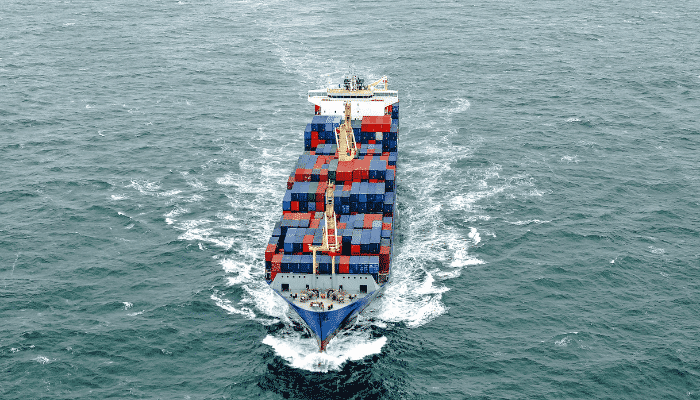
Nature Of Wind Action On Vessels
Before we begin, it is important to keep in mind that when we speak of ships or vessels, the action of the wind forces is generally due to their ‘exposed part’.
It makes sense from the fact that the immersed part of the vessel’s hull, a measure of its draft, is solely under the interplay of hydrostatics and hydro-dynamic phenomena and has nothing to do with the impact of surface winds and weather phenomena prevalent above the waterline.
So, which means that the part of the hull above the waterline, often designated as the ‘freeboard’ or the ‘reserve buoyancy’ and all structures situated above the main deck like deckhouses and superstructures, deck cargo (e.g., Container ships) upper-level decks and erections come under the purview of wind and weather actions.
Recall that the main deck or the exposed deck is rightfully termed as the Weather Deck!
Having said that, let us briefly look into the feasible zones of wind action as illustrated in the following sketch:

For the same simple reason, submarines and underwater vehicles are completely independent of surface phenomena (thought when submarines briefly come to the surface for some reason, there can be some impact of winds on the portion of their exposed hull, which, however, is not very significant and can be neglected for all practical purposes).
From a designer’s point of view, all these so-called ‘exposed areas’ of the vessel are aggregately termed as the ‘Windage Area’. We shall look into this again at a later course of this article.
Now, we must understand that during a vessel’s voyage, there are two very universal considerations again which must be taken into account:
- The forces exerted by the winds can be of any magnitude ranging from mild to fierce, depending on the climatic conditions.
- The direction of the air currents or wind incident on the vessel can be random.
Based on these, it is fair to expect that the vessel must be ready to counter any kinds of conditions in terms of magnitude and direction of the wind. The following figure best describes the types of wind directions incident on the vessel relative to the vessel’s heading.

Now, at any given condition of wind’s magnitude and direction, the net effect on the vessel can be varied. These depend on some factors like:
- Windage Area
- Hull form and overall design
- Relative direction of heading of the vessel with respect to the wind
- Deadweight, lightweight, and displacement of the vessel
- Draft and freeboard
Problems Of Wind Forces On Vessels
The effects of the wind forces and currents on a vessel can be segregated into three broad domains:
i) Vertical
ii) Lateral
iii) Air Resistance problems
The vertical domain pertains to the transverse or vertical stability of the vessel, i.e., the seakeeping aspects.
As we know, when the vessel is tilted through external forces or agents, it is said to heel. This condition is only relevant for wind forces acting tangentially on the vessel’s sides, i.e., beam winds or winds acting at some angle to the vessel’s centreline (like quartering winds) and thus, having some component perpendicular to the port or starboard sides.
The water pressure acting on the submerged part of the hull, that is, the hydrostatic pressure profile coupled with the wind force acting above gives rise to the heeling moment acting about the vertical centre of gravity (VCG or G) which tends to tilt the vessel.
The greater the counteracting force offered by the cancelling underwater hydrostatic pressures, the lesser is the effect of the net heeling moment tending to tilt the vessel to one side and vice versa.
The following figure with the direction of wind force vector component acting from the port side and the counteracting water pressure profile acting (through the centroid of the pressure distribution) on the submerged part of the hull in the opposite direction causing the vessel to tilt starboard due to the wind heeling moment explains best.
As expected, the notations K (baseline), G (vertical center of gravity), M (metacenter), original and new centre of buoyancies (B and B1) and the righting lever GZ have their usual meanings in terms of transverse stability.
(For more information, please have a read on the article: Understanding Intact Stability of Ships, Marine insight and other articles related to stability.)

For a given magnitude and direction of the wind force or its component, the overall transverse stability effects are dependent on the ‘vertical point of action’ on the vessel, which means the height relative to the sea level at which the wind force acts.
The higher the centroidal point of action, the greater is the moment arm and thus, the larger is the heeling moment offered on the vessel.
For the same reasons, for vessels with elevated superstructures like large passenger vessels or multi-deck carriers, the issue of dealing with a large modulus of wind heeling moments is a crucial problem.
Often the continuous impact of the wind heeling moments along with the counteracting righting moment gives rise to Rolling effects on vessels. All these are broadly explained in detail in the comprehensive articles related to Stability (towards end of article).
The lateral domain is related to the effects of the wind forces on the horizontal plane; hence, it deals with the course-keeping and manoeuvring problems of the vessel.
For expatriation of the wind-induced effects on the turning of a vessel underway in an open sea, let us look at a basic scenario as shown in the diagram below.

The wind force of a significant value acts on the starboard side of the vessel.
Let us assume that the wind is acting at an angle (ɸ) to the ship’s centreline which is also the direction of the heading of the vessel.
Let us assume that the actual velocity of the wind is Vw and the average speed of the vessel is Vs. So, the resultant wind velocity vector from these two vectors is V.
When the vessel is in motion, this is considered to be the effective wind velocity vector ‘actually’ acting on the vessel. The point on the vessel where the wind force acts is considered P, as shown.
In our case, it is assumed to be the forward of the ship’s longitudinal centre of gravity, LCG or G for reference. Now let us move to the following figures based on this.
Observe that the wind force vector acts at a point P which is ahead of G, also commonly referred to as the ‘pivotal point’.
So, the vessel tends to initially drift in an anti-clockwise sense due to the moment from the wind force vector (Mw). Or in other words, the vessel tends to turn in a direction opposite to the wind., port side by the bow in our case.
Due to the tendency of turning of the vessel, a component of resistance arises in a new direction opposite or nearly opposite to the heading or the heading-tendency due to the submerged part of the hull. This can be a combination of both frictional and wave resistance, the predominant component depending on the current sea state, hull form, and speed.
Now based on the same factors, the resistance force vector acts at a point, R either forward or aft of the point of action of the wind, P. But for our convenience, we assume it acts forward since that is most commonly the case and even if it acts aft, the resultant related effects remain unchanged.
The angle between the ship’s centreline or original heading of the vessel with the new direction vector of the water-resistance is β.
This force vector then creates a counter-moment MR which tends to turn the vessel about G towards the windward side, i.e., against the wind in a clockwise sense!
Now, two scenarios arise:
Situation 1: When the water resistance is higher than the wind forces, which is commonly the case, the moment MR is greater than Mw and this tends to turn the vessel in a clockwise sense as shown, where the net turning moment is the difference between the water-resistance and wind force moments (MR – Mw) acting about the longitudinal centroidal point of gravity, G.

Situation 2: When the wind forces or currents are greater than the water resistance, as in the case of smaller vessels with less displacement, or inclement weather conditions like gale winds or storms, or maybe a combination of all, the moment from winds Mw is greater than the sum of moments from water resistance components MR. This tends to continue rotating the vessel in an anticlockwise sense, the effective turning moment being Mw – MR acting about the LCG.

For the same reason, other than wave and sea states, it is always inadvisable to venture into deeper seas or oceans in small vessels like trawlers or pleasure yachts.
Due to the less deadweight and size of the vessel, the inertia of the vessel is very less. So, from Newton’s laws, it suffers greater effects of external forces like winds or currents as compared to larger ships.
Furthermore, due to low displacements and less wetted surface area, the water resistance is also considerably low.
Also recall from above that due to low drafts and less immersion, the water pressures acting on the hull is also relatively very less.
In extreme and erratic weather conditions, something quite common in deep seas, the wind forces, and currents reach very high values.
Hence, the difference between the wind and water resistance and pressure moments in both the vertical and horizontal planes, respectively, become so large that the vessel can drastically drift off-course, heel and roll severely and in worst cases, sink and topple in no time.
Air Resistance
Any form of wind action on a vessel leads to air resistance. This component of resistance, though much smaller than the two other major components, frictional and wave, is highly unpredictable and variable.
It depends on the intensity and direction of the wind along with other design, operational, and construction factors as stated above.
For example, for a fully-loaded container vessel stacked with exposed deck cargo, a significant headwind against its course can contribute to an air resistance component of more than 10-15%.
On the other hand, a lighter fishing vessel with a small deckhouse and with a steady following sternway wind (in the direction of its heading), has a constructive negative value of air resistance, i.e., instead of being hindered, it may have a contributing effect of the wind which may expedite its approach speed!

As already said above, vessels having larger windage areas, like cruise vessels, fully loaded deck-stowed container vessels or shallow-draft vessels (with a large freeboard) are more prone to surface action and hence have relatively greater values of air resistances.
So, for various directions and intensities of winds along with the size, type, and kind of vessels, there can be multifarious instances of air/wind resistance which accordingly affects the heading and relative speeds.
However, assuming normal weather conditions and sea states, an average-sized cargo vessel facing obstructive winds generally have an air resistance of around 2-5%.
It is important to note that beam winds, though not creating any direct drag against the vessel heading, can significantly contribute to air resistance by affecting the transverse stability and course-keeping of the vessel.
Though the actual estimation of air resistance can be a complicated task, empirical data-driven estimates based on ITTC guidelines and classification regulations can be useful in predictions.
Negotiating Wind Loads
Like water resistance, extenuating the effects of obstructive wind/air resistance is crucial for all vessels to commensurate voyage time, maintain course, vessel performance, reduce fuel consumption, and of course, stave off problems concerning stability seaworthiness, and vessel safety.
The two broad governing realms of facing wind action can be classified into:
• Vessel Design and Construction
• Operational measures
Let us first look into the latter aspect, the operational measures. One of the most widely followed ways to negotiate wind action underway is to use the first steps to assuage the effects of the wind load.
Let us get back to our previous instance where we have a steady forward quartering wind acting from the starboard side.
If the vessel’s induced water resistance moment is greater than the wind moment, there is a tendency for the vessel to veer off-course towards the starboard or windward side.
So, as explained in the following diagrams, a rudder angle toward the port side creates a countering moment (in an anticlockwise sense) which can make the vessel stay on course.
Conversely, when the wind-induced moments have larger values and tend to swerve the vessel to the leeward side (port in this case), a rudder angle towards the starboard side is applied.
This keep’s the vessel’s path on track. Similarly for other various instances of winds the rudder force is applied accordingly.
Rudder action is one of the oldest and convenient steps to counter wind actions.
Related Reading: How Does A Rudder Help In Turning A Ship?


However, in inconducive weather conditions, when the vessel is significantly tending to heel or roll due to wind loads, the vessel is often completely veered off course in the calmer, leeward direction till the impacts of strong winds subside. Here the transverse stability of the vessel becomes more important than the course-keeping!
Other than rudder action, modern technologies like bow/stern thrusters and Dynamic Positioning Systems (DPS), which are based on feedback mechanisms and automation accoutre in maintaining the vessel at a favourable course based on weather conditions and the vessel’s trajectory.
For countering beam or quartering winds that directly impact transverse stability, various mechanisms in the form of fin stabilizers, bilge keels, anti-roll tanks etc. are utilized.
Moreover, every vessel has its stability booklet and has to undergo definite procedures for improving stability in various conditions.
Vessel Design and Construction
Based on the service and the operational requirements of a vessel, vessel design and construction does play a pivotal role.
Since the Windage Area is a great determinant of the effects of wind action, vessels with lower windage areas have better performance in windy conditions and vice versa.
However, this is always not the case. For fully-loaded containerships, passenger ships with large superstructures, Ro-Pax vessels, certain defence and special-purpose vessels, etc., the windage area is quite large.
So, optimization of design and implementing greater improvements in terms of aerodynamics are found to be greatly instrumental in assuaging wind action and related effects like drag and resistance.
For example, containerships, which cater for more stringent requirements for voyage times, do have a finer hull form primarily for reduced frictional and wave resistance and this also enhances their aerodynamic characteristics, especially for head and bow-quartering winds.
Similarly, superstructures of modern design cruise vessels and Ro-PAXes are continually improving on their design with better aerodynamics which has better response characteristics to various kinds and intensities of winds.
As shown in the following representation, a basic curved rounded superstructure can have improved flow characteristics in headwinds.

You might also like to read:
- Ship Stability; What Makes a Ship Unstable?
- Effects Of Ice Accretion On Ship Stability
- Damage Stability Analysis Of Ships
- Ship Stability: Intact Stability Criteria and Inclining Experiment
- Ship Stability: Understanding Curves of Static Stability
Do you have info to share with us ? Suggest a correction

About Author
Subhodeep is a Naval Architecture and Ocean Engineering graduate. Interested in the intricacies of marine structures and goal-based design aspects, he is dedicated to sharing and propagation of common technical knowledge within this sector, which, at this very moment, requires a turnabout to flourish back to its old glory.
Latest Naval Arch Articles You Would Like:
Subscribe To Our Newsletters
By subscribing, you agree to our Privacy Policy and may receive occasional deal communications; you can unsubscribe anytime.










